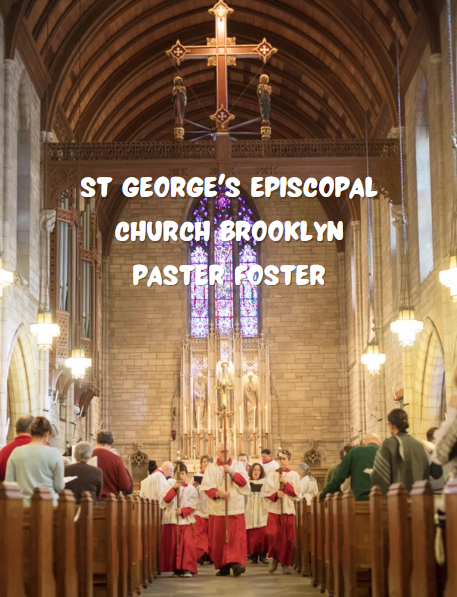Gutsy Boldness NYT: A Comprehensive Exploration of the Crossword Phenomenon
The New York Times (NYT) crossword puzzle is an iconic part of American culture, beloved by millions for its wit, challenge, and intellectual stimulation. Among the many clues that regularly stump solvers, one that often catches the eye is “gutsy boldness.”
The phrase “gutsy boldness NYT” has become a popular search term for those looking for help in solving the crossword, but it represents much more than just a simple clue. It embodies the spirit of what makes the New York Times crossword both frustrating and delightful.
In this article, we’ll take an in-depth look at the concept of “gutsy boldness” within the context of the NYT crossword puzzle, explore its significance, and offer insights that go beyond mere wordplay.
We’ll also discuss strategies for tackling similar clues, analyze why such clues are challenging, and delve into the broader cultural impact of the NYT crossword. Whether you’re a seasoned solver or a newcomer to the world of crosswords, this article will provide you with valuable insights and perhaps even a new appreciation for the art of puzzle-solving.
The Legacy of the New York Times Crossword
A Brief History of the NYT Crossword
The New York Times crossword puzzle was first published on February 15, 1942, and has since become a staple of American newspaper culture. Created by editor Margaret Farrar, the crossword quickly gained popularity for its clever clues and challenging grids. Over the decades, the NYT crossword has evolved, with contributions from some of the most brilliant puzzle constructors in the world.
The crossword puzzle is more than just a game; it’s a tradition that connects generations of solvers. It’s known for its rigorous standards, intellectual challenges, and a unique blend of humor and cleverness. Each puzzle is designed to engage the solver’s mind, requiring not just knowledge but also a deep understanding of language and wordplay.
The Role of Clues in the NYT Crossword
Clues in the NYT crossword are often cryptic, witty, and multi-layered. They can range from straightforward definitions to puns, anagrams, or references to culture, literature, and history. The puzzle is known for its “aha” moments, where a seemingly impossible clue suddenly makes perfect sense.
One of the reasons why the NYT crossword is so beloved is because of the cleverness of its clues. Solvers are often required to think outside the box, making connections that aren’t immediately obvious. This is where clues like “gutsy boldness” come into play, challenging solvers to stretch their thinking and approach the puzzle from new angles.
Decoding “Gutsy Boldness” in the NYT Crossword
What Does “Gutsy Boldness” Mean?
In the context of the New York Times crossword, “gutsy boldness” typically refers to a quality of being daring, courageous, or audacious. The clue is designed to evoke a sense of bravery or fortitude, qualities that can be associated with taking risks or standing up for something with conviction.
In crossword puzzles, clues like “gutsy boldness” are often not as straightforward as they appear. The solver must consider synonyms, idioms, or even cultural references that convey the same idea but in a different form. For example, the answer might be a single word like “nerve,” “pluck,” or “moxie,” each of which embodies the idea of boldness and courage.
Why “Gutsy Boldness NYT” Is a Challenging Clue
The challenge with clues like “gutsy boldness” lies in their ambiguity. The clue could point to a wide range of possible answers, making it difficult for the solver to pin down the exact word. Additionally, the NYT crossword often uses wordplay, so the answer might involve a pun or a less common synonym, adding another layer of difficulty.
Moreover, “gutsy boldness” is a phrase that can be interpreted in many ways, depending on the solver’s mindset. Some might think of physical courage, while others might consider moral or intellectual boldness. This variability in interpretation is what makes the clue both challenging and satisfying to solve.
Common Answers for “Gutsy Boldness” in NYT Crosswords
While the answer to “gutsy boldness” can vary depending on the puzzle, there are a few words that frequently appear in this context:
- Nerve: A common answer that conveys courage or bravery.
- Pluck: Refers to spirited and determined courage.
- Moxie: Slang for determination and audacity.
- Grit: Denotes firmness of character and indomitable spirit.
- Spine: Used metaphorically to indicate courage or resolve.
These answers reflect the quality of boldness and are often used in puzzles where the solver needs to think beyond the literal meaning of the words.
Strategies for Solving Difficult Clues
Understanding Crossword Clue Types
To successfully solve clues like “gutsy boldness,” it’s important to understand the different types of clues used in crosswords:
- Straightforward Clues: These are direct definitions of the answer.
- Wordplay Clues: Involve puns, anagrams, or other forms of word manipulation.
- Cryptic Clues: Common in British-style crosswords, where each clue includes a definition and a form of wordplay.
- Theme Clues: Related to the overarching theme of the puzzle, which can provide hints to the answers.
Knowing the type of clue you’re dealing with can help narrow down the possibilities and guide your thinking.
Techniques for Deciphering Tough Clues
Here are some techniques that can be particularly useful when dealing with challenging clues like “gutsy boldness”:
- Synonym Search: Think of all possible synonyms for the clue. This is especially useful for clues that are definitions of a quality or characteristic.
- Consider Word Length: The number of letters in the answer can help eliminate possibilities and point you toward the correct word.
- Break Down the Clue: Analyze each word in the clue separately to see if it has a double meaning or if it can be reinterpreted.
- Look for Common Crossword Answers: Some words are more commonly used in crosswords due to their letter combinations. Familiarity with these can be an advantage.
- Use the Crossword’s Theme: If the puzzle has a theme, consider how the clue might fit into that theme. The theme often provides context that can make solving the clue easier.
The Satisfaction of Solving Challenging Clues
The true joy of solving the NYT crossword comes from overcoming its challenges. Clues like “gutsy boldness” are designed to test your intellect and creativity. When you finally arrive at the correct answer, the sense of accomplishment is deeply satisfying. It’s not just about filling in the blanks but about the process of thinking critically and making connections that lead to the solution.
The Cultural Impact of the NYT Crossword
The Puzzle as a Reflection of Society
The NYT crossword is more than just a game; it’s a reflection of the times. The language, references, and themes often mirror current events, societal trends, and cultural shifts. A clue like “gutsy boldness” can be seen as a nod to the value placed on courage and audacity in contemporary society.
The crossword has also been a platform for subtle social commentary. Puzzle constructors often include clues and answers that challenge norms, celebrate diversity, and highlight important issues. In this way, the NYT crossword contributes to the broader cultural conversation.
The Role of the NYT Crossword in American Culture
The NYT crossword holds a special place in American culture. It’s a daily ritual for many, a mental exercise that engages both the mind and the spirit. The puzzle has also become a symbol of intellectual achievement; solving it is often seen as a mark of erudition and wit.
The crossword has even made its way into popular culture, with references in movies, television shows, and literature. It’s a testament to its enduring appeal and the respect it commands as a form of entertainment and a tool for intellectual growth.
FAQs About “Gutsy Boldness NYT”
1. What is the most common answer for “gutsy boldness” in the NYT crossword?
The most common answers include “nerve,” “pluck,” “moxie,” and “grit.” These words all convey the idea of courage and boldness.
2. Why is the clue “gutsy boldness” challenging?
The clue is challenging because it can be interpreted in multiple ways, and the answer often involves a less common synonym or a word with a metaphorical meaning.
3. How can I improve my skills at solving NYT crossword puzzles?
Improving your crossword skills involves practicing regularly, familiarizing yourself with common crossword words, and developing a strong understanding of different types of clues. Joining crossword-solving communities and studying past puzzles can also be beneficial.
4. What makes the NYT crossword puzzle unique?
The NYT crossword is known for its high-quality construction, clever clues, and intellectual challenge. It often includes themes, cultural references, and wordplay that set it apart from other crosswords.
5. How does the NYT crossword reflect cultural trends?
The crossword often incorporates contemporary language, references to current events, and themes that resonate with the times. This makes it both a reflection of and a contributor to the cultural landscape.
Conclusion
The New York Times crossword puzzle is a beloved tradition that challenges solvers with its wit, creativity, and intellectual rigor. The clue “gutsy boldness” is just one example of the many ways in which the puzzle tests your ability to think critically and creatively.
By exploring the meaning behind such clues, understanding the strategies for solving them, and appreciating the cultural significance of the NYT crossword, you can deepen your enjoyment of this classic puzzle and perhaps even become a more skilled solver.
So the next time you encounter a clue like “gutsy boldness,” remember that it’s not just about finding the right word—it’s about embracing the challenge and savoring the satisfaction that comes with solving one of the most revered puzzles in American culture.






